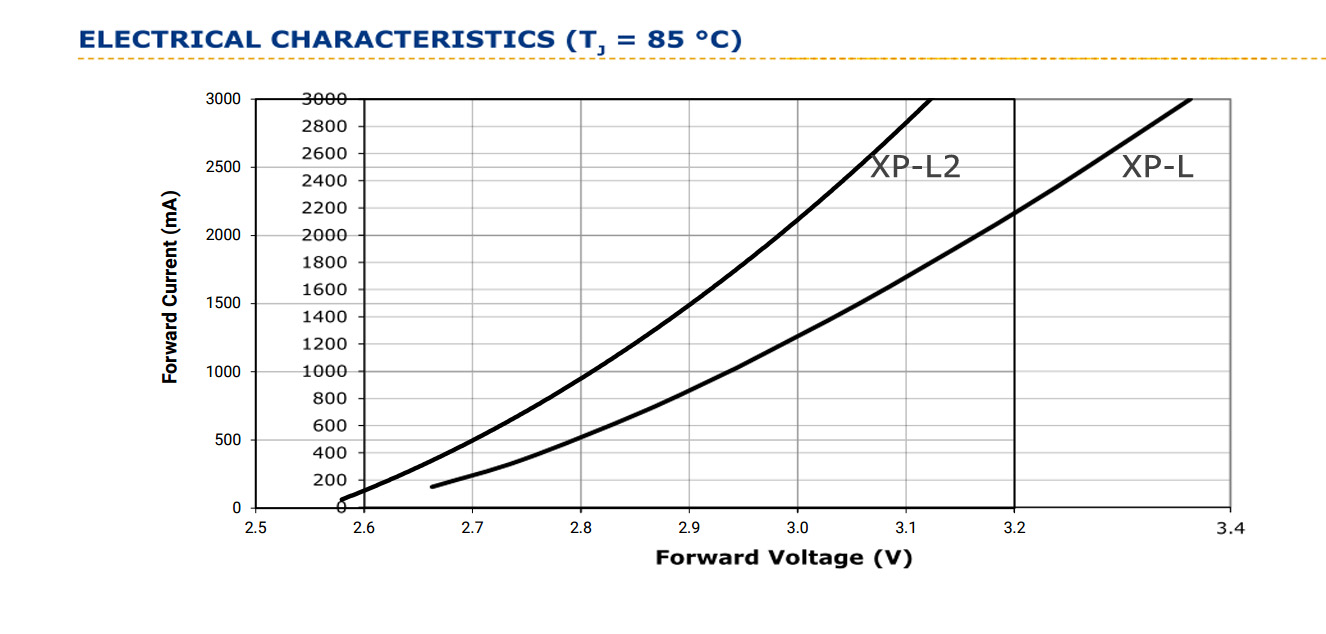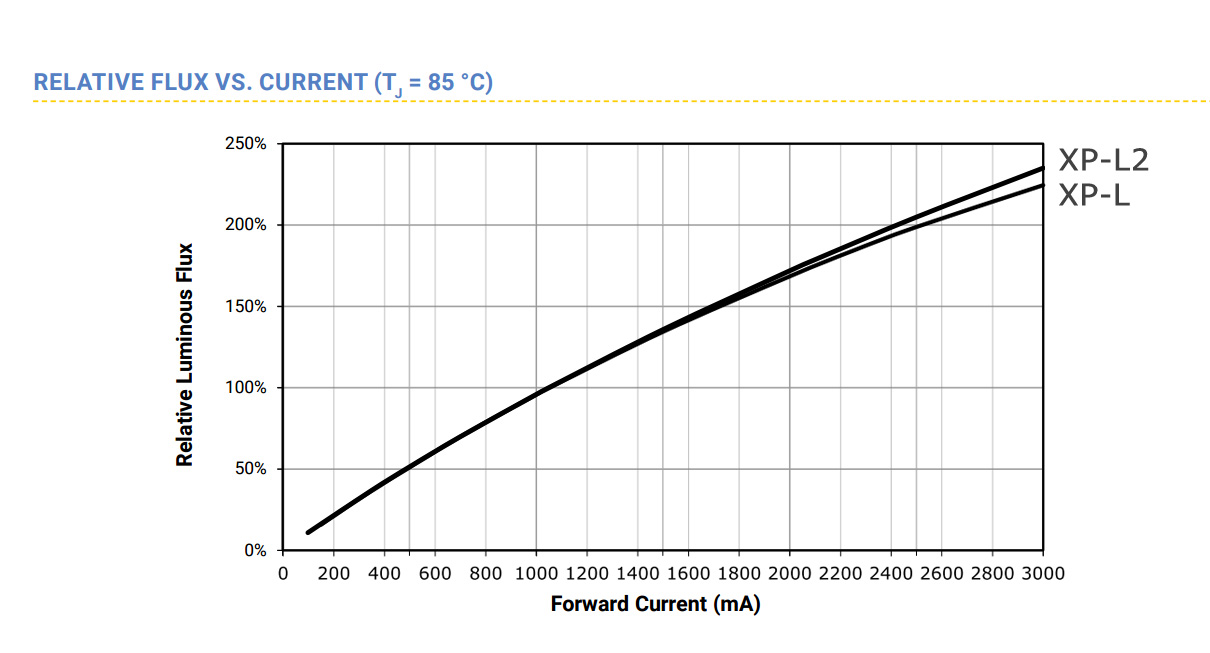sirpetr
Newly Enlightened
Hi folks,
CREE recently announced new XP-L2 leds as an upgrade to existing XP-L. It looks like its only marginal upgrade but not. Actually this is the best upgrade ever!
See official page: http://www.cree.com/LED-Components-and-Modules/Products/XLamp/Discrete-Directional/XLamp-XPL2
See datasheet: http://www.cree.com/~/media/Files/Cree/LED-Components-and-Modules/XLamp/Data-and-Binning/dsxpl2.pdf
1) LOWER VOLTAGE - VF CURVE
See mi picture where I overlayed both generation. XP-L2 has got lower voltage by 0.1 - 0.2V. In 3A current flowing through the diode there is 3.12V instead of 3.36V, which is even 0.24V. Translated to wattage, its 9.36W to 10.08W, 7.7% improvement.

2) HIGHER EFFECIENCY IN HIGH CURRENTS
See picture. Both generation overlayed on each other. XP-L2 gives 25% more when current is 3000mA. That means amazing difference of 115 lumens just in this. 1265 lumens compared to 1150 lumens, its 10% improvement.

3) HIGHER BINS AVAILABLE
Shortly you could buy 5000K or 4000K color temperatures in V5 bin (460 lumens/1050mA) which wasnt possible anytime before. V4 to V5 is 4.5% improvement.
For me this is amazing upgrade, on high currents total improvements well over 20%. We still do not have exact datas in pct.cree.com application, values were taken from datasheet.
CREE recently announced new XP-L2 leds as an upgrade to existing XP-L. It looks like its only marginal upgrade but not. Actually this is the best upgrade ever!
See official page: http://www.cree.com/LED-Components-and-Modules/Products/XLamp/Discrete-Directional/XLamp-XPL2
See datasheet: http://www.cree.com/~/media/Files/Cree/LED-Components-and-Modules/XLamp/Data-and-Binning/dsxpl2.pdf
1) LOWER VOLTAGE - VF CURVE
See mi picture where I overlayed both generation. XP-L2 has got lower voltage by 0.1 - 0.2V. In 3A current flowing through the diode there is 3.12V instead of 3.36V, which is even 0.24V. Translated to wattage, its 9.36W to 10.08W, 7.7% improvement.

2) HIGHER EFFECIENCY IN HIGH CURRENTS
See picture. Both generation overlayed on each other. XP-L2 gives 25% more when current is 3000mA. That means amazing difference of 115 lumens just in this. 1265 lumens compared to 1150 lumens, its 10% improvement.

3) HIGHER BINS AVAILABLE
Shortly you could buy 5000K or 4000K color temperatures in V5 bin (460 lumens/1050mA) which wasnt possible anytime before. V4 to V5 is 4.5% improvement.
For me this is amazing upgrade, on high currents total improvements well over 20%. We still do not have exact datas in pct.cree.com application, values were taken from datasheet.


 Hang around a while - you'll make great friends here.
Hang around a while - you'll make great friends here. 